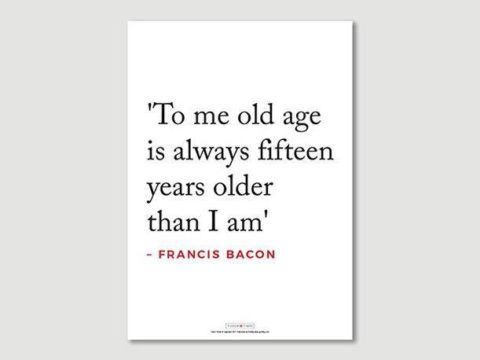Bess of Hardwick: Life Story
Chapter 7 : Family Arrangements
When Bess married Shrewsbury, unless their marriage agreement provided otherwise, he became the legal owner of all the property she held that was not already settled, by her or her previous husbands, on her children. The details of the actual settlement are not known, but in 1572 they were altered. Shrewsbury agreed to settle all Bess’ lands on her two younger sons, William and Charles, with Bess retaining a life interest.
The reason given in the deed was that the land grant was in consideration of Shrewsbury’s considerable debts to his wife, the sums he had agreed previously to pay to his step-sons and to discharge his responsibility for some of Bess’ own debts, although we do not know what those liabilities were. Unusually, the deed was not witnessed, just signed by Shrewsbury, which led to trouble later. In 1572, however, Bess and Shrewsbury were still on excellent terms.
1572 brought more political problems. The Massacre of St Bartholomew in Paris caused outrage, and Elizabeth sent orders for Mary to be even more heavily guarded – even a short move from Sheffield Castle to the manor house was not permitted. Later though, she was permitted to take the waters at Buxton in a house that Shrewsbury, at some expense, had had built in the newly-fashionable spa town. It is not clear whether Bess was part of the party. She may have taken the opportunity to visit Chatsworth, which is in close proximity.
During the early 1570s, Henry Cavendish returned home and set up his household with Grace at Tutbury Abbey. Soon, both he and Charles were proving to be less than satisfactory sons. Two of Henry’s men became involved in a brawl in which one was killed, and Henry himself became involved in a similar fatal contretemps, leading to investigation by the Privy Council.
Charles provoked a letter from Shrewsbury to Bess in which he asked her to keep her son under control – he and his friends had gone out poaching one night.
By 1574, Bess had only one unmarried child. Elizabeth Cavendish was nineteen – somewhat late for a marriage to be agreed. There had been one negotiation, with the husband of Bess’ old friend, Katherine, Duchess of Suffolk, Richard Bertie. Bertie had suggested their son, Peregrine, who was heir to Katherine’s barony of Willoughby d’Ereseby. Nothing had come of the discussions, perhaps because Bess knew that Queen Elizabeth disliked Katherine, and had refused ever to receive her at court. What would be the point of marrying her daughter to a mere baron, who was not favoured by the queen?
Nevertheless, Bess and Katherine remained friends, and the Dowager Duchess visited Chatsworth in 1574, which annoyed the Queen, although she could hardly complain about private visits. What Bess and Katherine actually discussed cannot be proven, but, not long after, Bess removed her household to Rufford Abbey, where she entertained Lady Margaret Douglas, Countess of Lennox.
Lady Lennox, who, despite being a Catholic, had been friends with Lady Suffolk since their time together as ladies-in-waiting to Queen Katherine Parr, was also the mother-in-law of the Queen of Scots. After her son, Darnley’s, death, Lady Lennox had been bitter against Mary, accusing her of complicity in the murder and begging Queen Elizabeth to avenge her. By 1574, however, she had become convinced of Mary’s innocence.
Although Elizabeth was apparently unaware of the rapprochement between Lady Lennox and Mary, she was nervous of any meeting between the two, so, when Lady Lennox received permission to travel to her northern estates, she was forbidden from going via Chatsworth or Sheffield Castle. Nothing had been said about Rufford Abbey, so Lady Lennox took the opportunity, after leaving Lady Suffolk at Grimsthorpe, to call on Lady Shrewsbury and her daughter, Elizabeth Cavendish.
It so happened that Lady Lennox was accompanied by her son, Lord Charles Stuart, Earl of Lennox, just the same age as Elizabeth Cavendish. Lord Lennox had a strong (although not uncontested) claim to be the heir to the crown of Scotland.
Lady Lennox had no sooner arrived at Rufford than she felt ill. Bess was so engaged with looking after her that the two ladies had no time to supervise their children, who promptly fell in love to such an unrestrained degree that they had to be speedily married – or so the ladies informed Cecil when Elizabeth found out. Nothing was said of the great advantage to Bess in allying herself to the royal family of Scotland, likely to be the royal family of England in due course, or to Lady Lennox of the Cavendish and Shrewsbury money that she desperately needed.
Elizabeth was in a quandary. She trusted Shrewsbury to guard the Queen of Scots, but now she had potentially to punish his wife for becoming mother-in-law to Queen Mary’s own brother-in-law and cousin. However fond she had once been of Bess, she must have been cursing her name. Shrewsbury wrote to Cecil that, although the marriage had been canvassed between the two ladies the previous year, they had not though it important enough to trouble the Queen with it – a disingenuous statement at best. The actual event had taken place without Shrewsbury’s knowledge, but he hoped the Queen would be her usual ‘good and gracious’ self and not think of either Bess or himself as anything other than her Majesty’s ‘most true and faithful servants.’
Elizabeth (Bess) Hardwick
Family Tree




